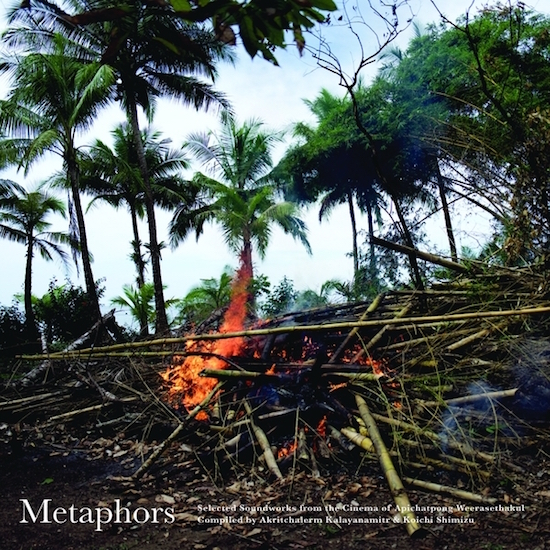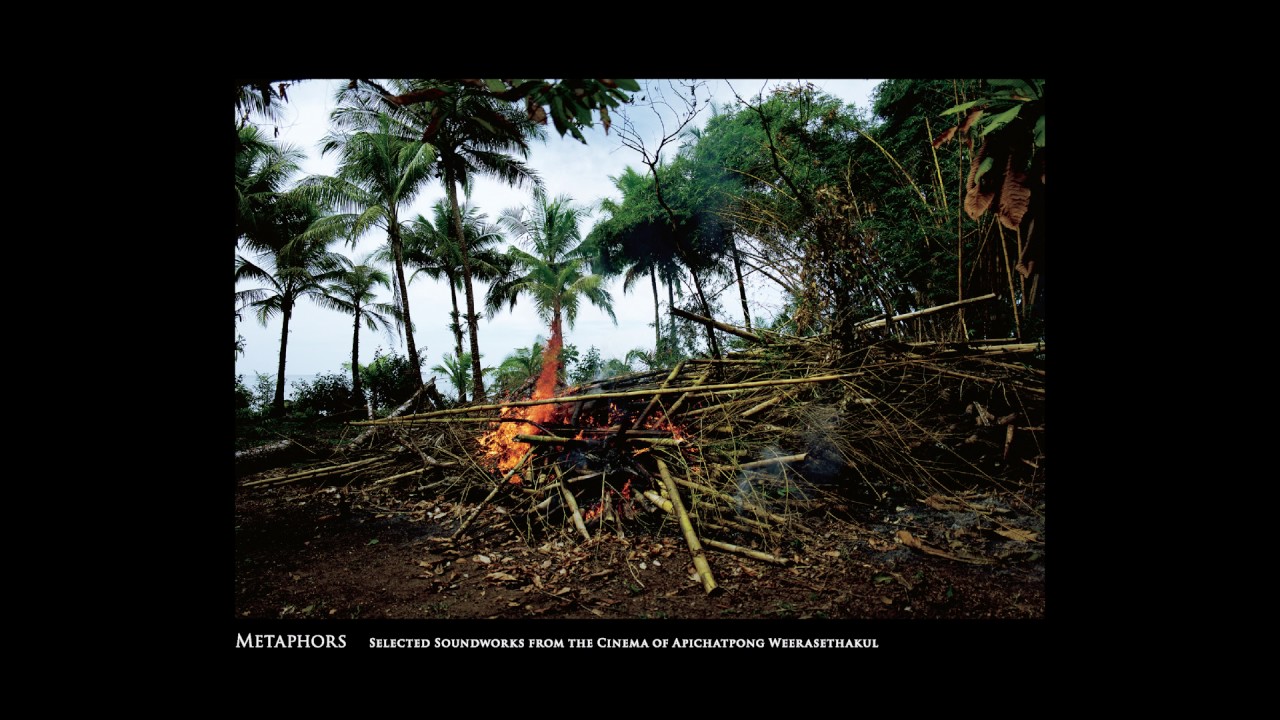Watching Apichatpong Weerasethakul’s films – such as Uncle Boonmee Who Can Recall His Past Lives, or 2015’s Cemetery Of Splendour – is like spending time with close friends with whom you can slip into comfortable patterns without fearing a lull in conversation. There is a sense of life being presented to you as is, without any particular narrative point to prove. There’s a aimless, wandering quality to his films, they meander from one scene to another; you’re there to hang out and enjoy the company.
The album is curated by sound designers Akritchalerm Kalayanamitr and Koichi Shimizu, who have previously worked with the director, and it gives a glimpse into the soft and insightful moods that Weerasethakul has delved into in his two decades as a director and artist. His films deal with personal and universal themes of life, death, grief, sexuality, social condition, and much else.
In Metaphors, genres vary – there are light-hearted, mellow, and emotional songs, pop ballads, juxtaposed with tracks that take the form of natural- and environmental-sound-turned-compositions. In ‘Dawn of Boonmee’ from Uncle Boonmee…, the sound is thickly populated with birds chirping, roosters and flies, alongside some perceptible human movement. In the films themselves, some of these soundworks are simply background noise, enmeshed in the very fabric of the film. Yet the soundwork on its own creates a vivid, immersive environment.
Weerasethakul has worked with the same sound designers and engineers for almost 15 years now. Much of his soundworks are the result of on-location sounds which are manipulated in post-production to create an artificial yet naturalistic sound. The dialogue in Weerasethakul’s films is dialogue, silence is weighed – there is a constant hum of life, through the sounds of nature or architecture. Silence is seen as a presence full of meaning, rather than as an absence of sound.
‘Sharjah and Java (Dilbar / Morse Beat Roar / Ablaze)’ stands out in the album. The manipulation of sound is easier to pick up on here – it has compositional structure, even resembling noisy experimental electronic music. The conflict between natural and manmade is reflected in the use of natural sounds warped beyond recognition over the course of the track, alongside industrial sounds. They are expressed in echoing voices, the rhythmic drive of machinery, and pulsating sounds that populate the track, evoking discomfort.
Just as environments and colour palettes drastically change in his films, based on the divide between rural and city life, this album reflects those transitions in mood. Soundtrack albums hold the risk of being too disparate or too uniform, but Metaphors offers a peek into the expansive world that Apichatpong Weerasethakul constructs, and his explorations of sound through memory.



